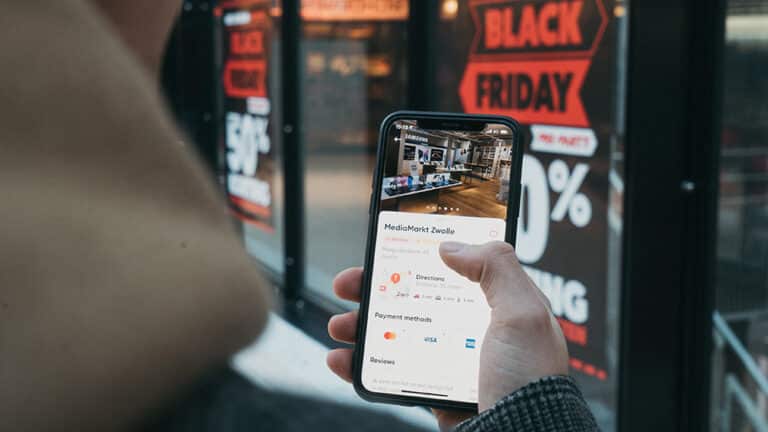Christmas shoppers are changing their behaviors and are now buying in larger volumes, but most importantly, earlier than previous years. According to Facebook’s Global Holiday Trend Study, 43% of shoppers in 2018 started shopping for Christmas in November or earlier.
Not to mention, holiday shoppers are not only shopping for Christmas, but several other major global shopping events, such as, Black Friday, Cyber Monday and Single’s Day, which all occurs in Q4. We have selected and summarized the most important key takeaways from the report we think you should consider.
“Social is the new shop window: the place that consumers browse to find ideas and inspiration” — Deloitte Retail Trends 2019
Window shopping
Due to the massive amounts of accessible information on social platforms, consumers are able to engage with brands across multiple channels before making their purchases. This pre-research or “window shopping” behavior allows consumers to experience less inconvenience or friction when it comes to getting what they want.
69% Of people find Stories on Facebook and Instagram to be a great way to discover and become familiar with new products or services.
62% Of people become more interested in a brand or product after seeing it in Stories.
Messaging is fueling loyalty
There has been a tenfold increase in three years of messages being sent between people and business on Messenger – 20B messages are now being sent every month between people and businesses on Messenger. 65% of Christmas shoppers mean they would be more likely to purchase from a business if they were able to contact them through a messaging service. Here’s the top three indicators why global Christmas shoppers message businesses:
48% Find out more details about a product
43% Purchase a product
37% Find out store information.
Major shopping events have gone global
Due to the globalization of social, many shopping events have received a natural boost and globally shopping growth.
BLACK FRIDAY AND CYBER MONDAY
Grew by 9% and 15%, respectively, between the 2017 and 2018 seasons.
SINGLE’S DAY
Is during this same period, known as 11:11, grew by 25% in the same period.
“TREATING YOURSELF”- BEHAVIOR
From millennials is very common and we might expect this type of behavior to expand, not only during Q4…

How to prep and plan
Staying synchronized and agile with these key findings is one step closer to succeeding in Q4. But how does a social media marketer, performance marketer, project leader or creative producer manage to keep all the holiday shoppers happy? There is no magical formula. The answer is easier than we think: we prep and plan.
Phase 1 (June-August)
Prepare
Facebook recommends to build your strategy, prep your technical set-up, build data based audiences, test creative and build your product catalogues already in June and August.
- Do a thorough review of last year’s performance
- Prep your tech
- Think mobile-first and partner up
- Build audiences, test your creative and build catalogues
- Get set up early and build data. Book reach & frequency campaigns if that is the plan.
Phase 2 (September-October)
Build momentum
Further, building your momentum and awareness (starting your campaigns) should occur already in September/October.
- Recommended campaign start (acquisition campaigns)
- Kick off omni-channel branding campaigns and engage influencers to help spread your brand message
- Scale your audience using dynamic ads for broad audiences and building lookalike audiences based on purchasers
- Remind earlier browsers about your products with retargeting for dynamic ads
- Increase investment in prospecting to build custom audiences
Phase 3 (November-December)
Maximize sales
November/December is when you maximise sales campaigns and trust that the set up was properly implemented.
Inventory: Make sure your automatic placement and your campaign budget optimization work together using lowest cost bidding
Targeting: Use broad audience targeting, employing dynamic ads with broad audiences and create value-based lookalikes from your web, app, catalog or offline events.
Bidding: Bid higher than in non-holiday seasons, maximize delivery at any cost and achieve maximum delivery with minimum ROAS goal
Optimization: Meet minimum conversion requirements and optimize for your success metric.
Creative: Create to convert and make content that is relevant to the people you want to reach in order to achieve your desired outcome – don’t be afraid to add new creative to ads sets and try a new creative approach.
Phase 4 (January)
POST-HOLIDAY
Finally, some brands might forget about retention (expanding your sales) and the post-Christmas season in January. This is when you nurse your new customers and run cross-sell and up-sell campaigns.
Stay connected to customers with:
- Related offers
- Post-purchase-only discounts on related products
- Customer feedback services
- Branding campaigns
- Keep the offers coming.
We hope you enjoyed the reading and gained some valuable insights about the social media landscape. If you’re unsure for how to tackle things and go about it, we’re always at your disposal. Don’t forget to subscribe to stay updated! 🥳





